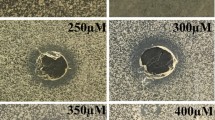Abstract
This study aimed to examine the involvement of oxidative damage in amphotericin B (AmB) activity against Candida albicans using the superoxide (O2−)generator paraquat (PQ). The effects of PQ on AmB activities against growth, viability, membrane permeability and respiration were examined in a wild-type parent strain (K) and a respiration-deficient mutant (KRD-19)since PQ-induced superoxide generation depends on respiration. In the parent strain, the minimal inhibitory concentration(MIC) of AmB, 0.25 μg/ml, tested with a liquid culture was lowered to 0.025 μg/ml by 1 mM PQ. Such a PQ-induced decrease in the MIC value of AmB was minimal in the mutant. Similar PQ-induced enhancement of AmB activity toward the parent strain was also observed with growth on an agar medium. In viability tests, when candidal cells were exposed to AmB (0.1 μg/ml) for 1 h, the lethality of AmB was enhanced by 1 mM PQ only in the parentstrain. Exogenous superoxide dismutase and catalase failed to diminish the enhancing effect of PQ on the growth inhibitory activity of AmB in the parent strain, suggesting an interaction between superoxide and AmB in candidal cells. The enhancement of AmB activity by PQ, observed preferentially in the wild-typestrain, can be explained by extensive superoxide generation depending on respiration. These results suggest that oxidative damage induced by superoxide is involved in AmB activity against C. albicans.
Similar content being viewed by others
References
Aoki S, Ito-Kuwa S. Respiration of Candida albicansin relation to its morphogenesis. Plant Cell Physiol 1982; 23: 721–726.
Aoki S, Ito-Kuwa S. Induction of petite mutation with acri-flavine and elevated temperature in Candida albicans. JMed Vet Mycol 1987;25: 269–277.
Aoki S, Ito-Kuwa S, Nakamura K, Nakamura Y, Vidotto V, Takeo K. Chemiluminescence of superoxide generated by Candida albicans: Differential effects of the superoxide generator paraquat on a wild-type strain and a respiratory mutant. Med Mycol 2002; 40: 13–19.
Brajtburg J, Powderly WG, Kobayashi GS, Medoff G. Amphotericin B: Current understanding of mechanisms of action. Antimicrob Agents Chemother 1990; 34: 183–188.
Hamilton AJ, Holdom MD. Antioxidant systems in the pathogenic fungi of man and their role in virulence. Med Mycol 1999; 37: 375–389.
Ito-Kuwa S, Nakamura K, Aoki S, Osafune T, Vidotto V, Pienthaweechai K. Oxidative stress sensitivity and superoxide dismutase of a wild-type parent strain and a respiratory mutant of Candida albicans. Med Mycol 1999; 37: 307–314.
Kobayashi D, Kondo K, Uehara N, Otokozawa S, Tsuji N, Yagihashi A, Watanabe N. Endogenous reactive oxygen species is an important mediator of miconazole antifungal effect. Antimicrob Agents Chemother 2002; 46: 3113–3117.
Medoff G. The mechanism of action of amphotericin. In: Van Den Bossche H, Mackenzie DWR, Cauwenbergh G, eds. Aspergillusand Aspergillosis. New York: Plenum Press, 1987: 161–164.
Odds FC. Candidaand Candidosis. 2nd ed. London: Bailliere Tindall, 1988.
Sokol-Anderson ML, Brajtburg J, Medoff G. Amphotericin Binduced oxidative damage and killing of Candida albicans. J Infect Dis 1986; 154: 76–83.
Sokol-Anderson ML, Brajtburg J, Medoff G. Sensitivity of Candida albicansto amphotericin B administered as single or fractionated doses. Antimicrob Agents Chemother 1986; 29: 701–702.
Sokol-Anderson M, Sligh Jr JE, Elaberg S, Brajtburg J, Kobayashi GS, Medoff G. Role of cell defense against oxidative damage in the resistance of Candida albicansto the killing effect of amphotericin B. Antimicrob Agents Chemother 1988; 32: 702–705.
Wang Y, Casadevall A. Growth of Cryptococcus neoformansin the presence of L-DOPA decreases its susceptibility to amphotericin B. Antimicrob Agents Chemother 1994; 38: 2648–2650.
Author information
Authors and Affiliations
Rights and permissions
About this article
Cite this article
Okamoto, Y., Aoki, S. & Mataga, I. Enhancement of Amphotericin B Activity Against Candida albicans by Superoxide Radical. Mycopathologia 158, 9–15 (2004). https://doi.org/10.1023/B:MYCO.0000038430.20669.80
Issue Date:
DOI: https://doi.org/10.1023/B:MYCO.0000038430.20669.80




